There are 17 good companion plants for Sage and 10 bad companion plants for sage on this list.
Known by the botanical name Salvia officinalis, common sage is a perennial plant in the family Lamiaceae which is the mint family. Several other species of sage exist, like Spanish, white, autumn, pineapple, scarlet, Greek and woodland sage.
Sage is related to some other plants like rosemary, marjoram, mint, oregano and basil. It is a staple perennial herbaceous plant with woody stems, blue to purple flowers and distinct grayish green leaves.
The plant is cultivated for use as a culinary spice or in herbal medicine. It provides certain health benefits including pain alleviation, improvement of memory, alertness and attention, aiding of brain function and betterment of oral health.
Also called broadleaf sage, culinary sage, garden sage, true sage or kitchen sage, common sage is quite easy to grow and is not extremely difficult to care for. Also, after producing flowers, its flavor does not reduce in intensity.
Keep reading to know more about companion plants for sage as information on seventeen (17) good companions and ten (10) bad companions for growing this plant in your garden is provided below.
Companion planting is a method used by gardeners for many years to ensure the presence of useful insects, absence of harmful insects, a lack of competition between plants, optimization of garden space and ultimately good harvest.
The whole idea of companion planting involves growing crops together which would not rob each other of nutrients but will bring benefits to each other or at least provide advantages to one of them without harming the other one.
Table of Contents
Good Companion Plants for Sage
1. Beans

Although beans and sage should not be planted very close to each other to avoid slowed growth, bean plants are beneficial to your sage. The type of beans to comfortably plant around sage are drought tolerant ones like pole and garbanzo beans (Chickpeas).
Sage does not require too much moisture, which is why it needs plants around it that also do not need much water. The benefit of been plants is that they fix nitrogen in the soil, thus replenishing used up nutrients in it.
Boosting the soil’s nutrients encourages the healthy growth of your sage plant. In turn, the aroma of sage which is strong and sharp deters several pests from beans. Both plants are beneficial to each other.
2. Broccoli
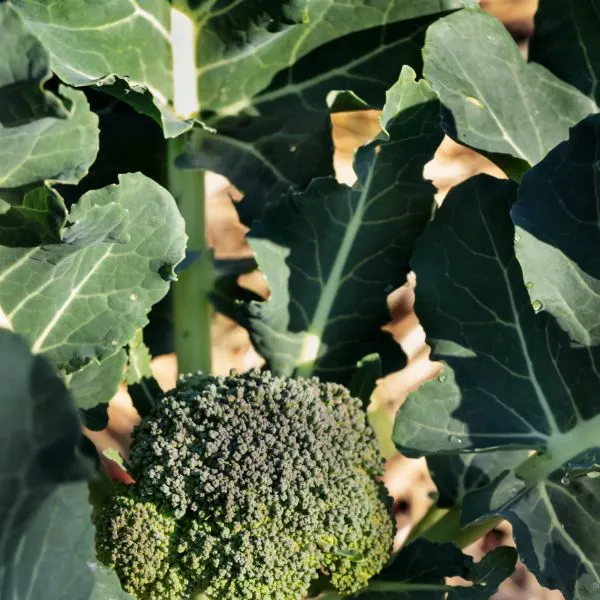
Growing sage around any plant in the family Brassicaceae is a good idea. The pairing is however more beneficial to the brassicas, like broccoli, than your sage plant. So sage is a good companion plant for broccoli.
Broccoli is an edible green plant with origins in Italy. It has a large flowering head (the top part made of immature flowers), stalks and small leaves which are eaten as a vegetable. The plant requires lots of nutrients from the soil.
Sage keeps pests like cabbage loopers and cabbage moths away from this plant by masking broccoli’s scent with its own strong odor. Both plants will likely not fight for nutrients as sage does not need as much as broccoli needs.
3. Brussels Sprouts
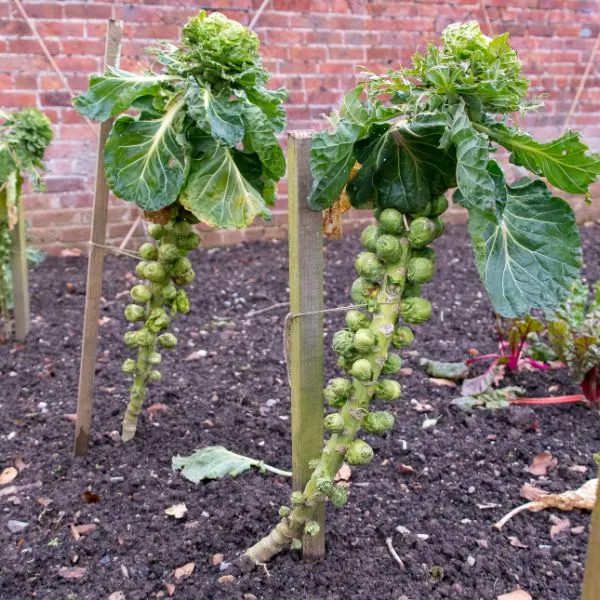
Another plant in the Brassicaceae family that tends to benefit from being grown with sage is the Brussels sprout. Like other plants in its family, it has deep roots and is a heavy feeder (a plant that requires more nutrients than most other plants).
Brussels sprouts have been popular in Brussels, Belgium, hence their name. They are native to the Mediterranean region however, and they look like very small cabbages. A number of pests that attack this plant are warded off by sage.
Some of such pests include cabbage maggots, black flea beetles and cabbage loopers. Growing sage beside Brussels sprouts is also comfortable as sage is a light feeder that would not need as much nutrients from the soil as Brussels sprouts.
4. Cabbage
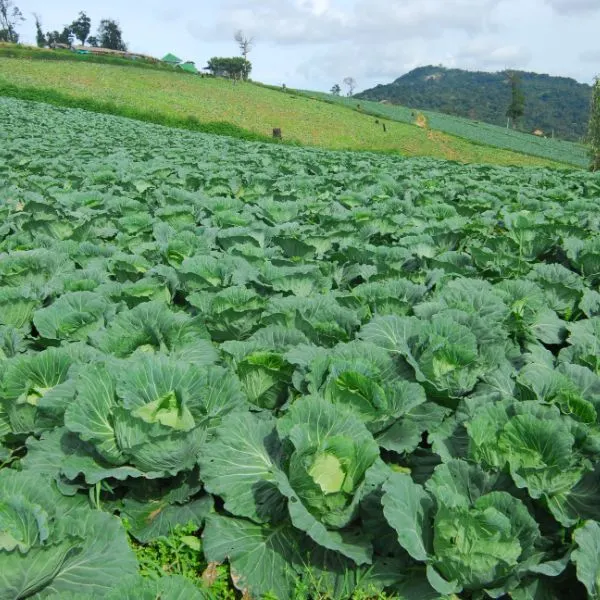
Cabbage is a brassica (the Brassicaceae family is literally also known as the cabbage family) and sage is a good companion for it in the garden bed. As stated before, sage helps ward off some pests of this plant.
The strong smell of sage is able to mask that of cabbage. This way, when cabbage loopers, cabbage moths, cabbage maggots and black flea beetles come to your garden, they would not be able to tell where your cabbages are!
Although both cabbages and sage plants have shallow root systems, the roots of cabbage tend to go deeper than that of sage. Sage is a light feeder while cabbage is a heavy feeder and so they are not likely to compete for nutrients in the soil.
5. Cauliflower

One other example of a brassica that can be comfortably grown with sage is cauliflower. Although their relationship is not a symbiotic one (one that is beneficial to both parties), it is not harmful to the sage plant.
Cauliflower, like broccoli, features partially developed flowers that make up the head or “curd” and green leaves. This head is usually white but some maybe green, orange or purple in color. The head is the edible part of the vegetable.
The scent of the sage beside cauliflower deters pests such as cabbage maggots and black flea beetles from attacking the cauliflower. Also, both plants would not have to compete for nutrients as sage is a light feeder.
6. Carrots
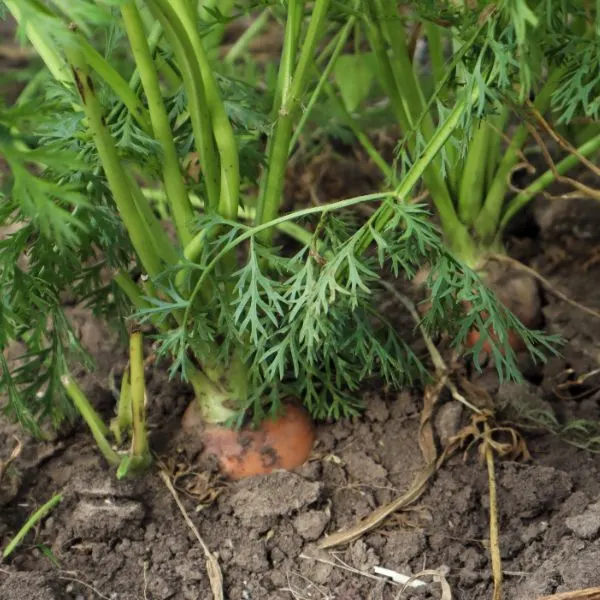
Carrots are good companion plants for sage. Both plants are useful to each other, enhancing growth, flavor profile and pest control. Growing carrot and sage together betters the taste and flavor of both the herb and the vegetable.
The attack of carrot rust flies is one of the most common and dangerous problems when it comes to growing carrots. The pests completely destroy carrots, usually in a space of between 3 and 5 days.
Growing sage beside carrots masks their smell and reduces the amount of carrot rust flies being drawn to them and the extent of the carrots’ rust. This leads to better yield, and because the carrot is a root vegetable, it does not compete with sage for soil nutrients.
7. Kale
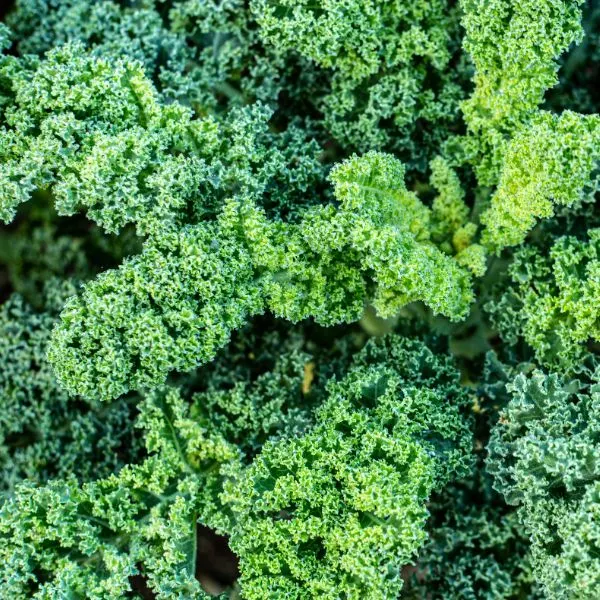
Yet another vegetable in the brassica family is kale. Also referred to as leaf cabbage, kale is a plant with leaves that are green or purple in color. Its leaves are edible, do not form a central head and may be used for ornamental purposes.
Sage, when planted beside kale, can help reduce the amount of damage done to the kale plant by pests. It does so by masking the scent of kale with its own strong scent, warding off pests like black fleas, cabbage loopers and moths.
The pairing is also comfortable and does not harm any of the crops. This is because kale’s heavy feeding is balanced by the light feeding of sage. While kale needs lots of nutrients, sage does not so chances of competition are reduced.
8. Kohlrabi

Also referred to as the German turnip, kohlrabi is a cultivar of wild cabbage. It is a member of the same species as broccoli, Brussels sprouts, cabbage, cauliflower, kale and some other vegetables in the Brassicaceae biological family.
The stems and leaves of this vegetable may be eaten raw or cooked. The plant has edible leafy greens, thin stems and yellow flowers. Kohlrabi is nearly spherical in shape with more flesh than skin and a taste similar to that of cabbage.
Growing kohlrabi with sage protects the former from several harmful pests by the strong scent of the sage plant. This relationship is also quite free from competition because while kohlrabi takes up a lot of nutrients, sage does not.
Although it is generally advisable to grow brassicas around sage plants to ward off pests like black flea beetles, cabbage loopers, cabbage maggots and cabbage moths, it is not ideal to grow brassicas around each other.
This is because they are all heavy feeders, requiring lots of nutrients for their growth and health. Planting these crops side by side would lead to competition amongst them and poor yields in the end.
9. Lavender
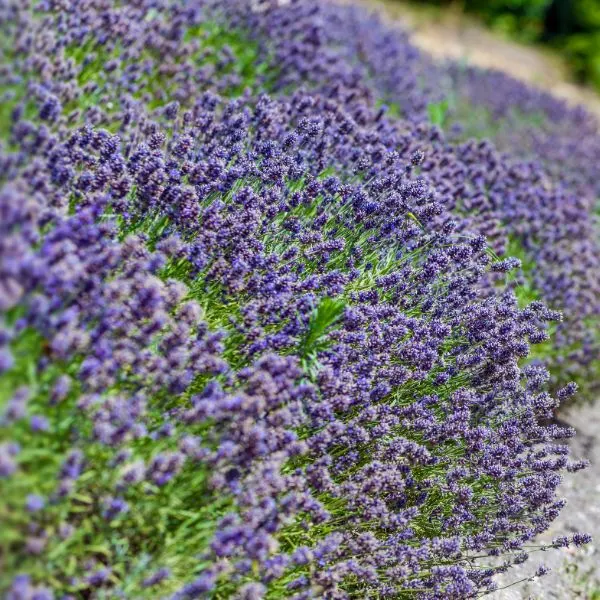
Lavender is a genus of flowering plants belonging to Lamiaceae (the mint family), the same biological family as sage. Plants in this genus are native to the Old World (Africa, Europe and Asia), bearing the same origins as sage.
This plant is cultivated for ornamental, medicinal and culinary purposes. It has beautiful flowers that attract pollinators and other beneficial insects to your garden. Besides this, the plant does not necessarily benefit your sage.
Lavender is a good companion plant for sage because both plants have similar origins and in turn similar care needs. Plants with similar or the same care requirements tend to be friendly to each other when grown side by side.
10. Nasturtium
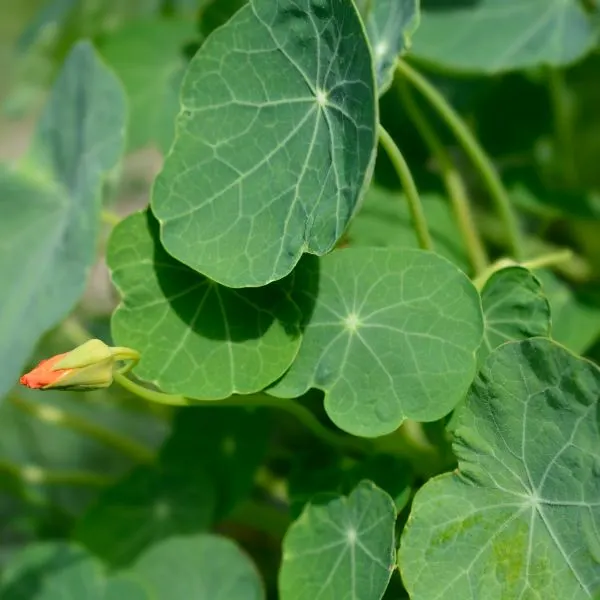
The genus of plants called nasturtium is also known as tropaeolum. It contains several creeping herbaceous plants which may be annual or perennial. They have showy round flowers and may be used in herbal medicine or cooking.
As creeping plants, nasturtiums can serve as ground cover in your garden, maximizing garden space. Also, with their very beautiful and conspicuous flowers, they are able to attract beneficial insects to your sage when they grow side by side.
Sage plants are susceptible to attacks from whiteflies. The scent of nasturtium can help your sage plant by repelling these insects, controlling the amount of damage they cause to your sage and helping the plants grow healthy.
11. Oregano
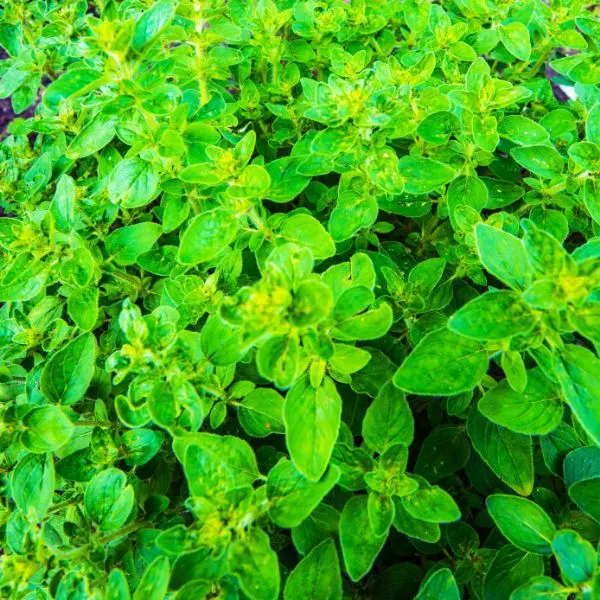
One of the best companion plants for sage is oregano. This is another herb that grows well beside sage. Both plants are not exactly beneficial to each other but cultivating them together is conducive and not problematic to any.
Oregano is also called origanium or wild marjoram. It is a species of aromatic flowering plants in the mint family. The plant, native to the Mediterranean, is a woody perennial with beautiful purple flowers.
Sage and oregano are friendly to each other because they share the same origin and their care requirements are alike. Just like sage, oregano needs well drained soil, average amounts of moisture and direct sunlight for optimal growth.
12. Parsley
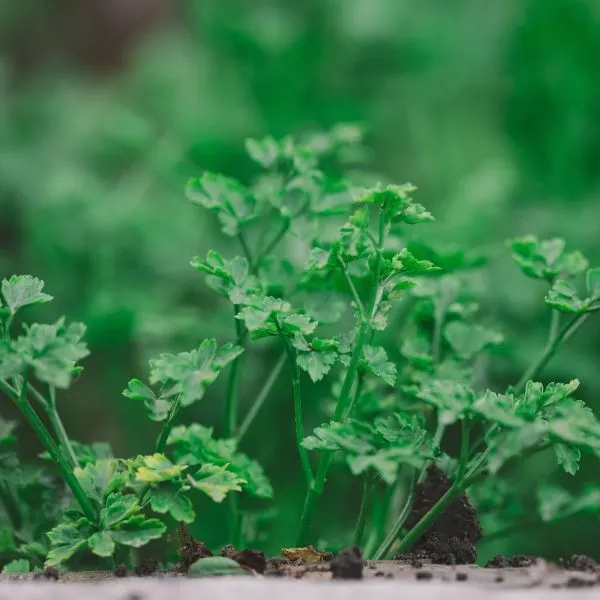
Parsley is another herb which is a good companion plant for your sage in the garden. Also called parsley, it is a species of flowering plants native to the Mediterranean. It is mostly cultivated for use as a herb and as a vegetable.
Both plants do not have adverse effects on each other. They have similar care requirements and growth conditions so this makes caring for both of them at the same time easy. You do not need to worry when you place them in close proximity.
Apart from the fact that it is easy to grow both of these plants together, sage actually benefits from having parsley around it while it grows. Sage is believed to benefit from the pollination properties and abilities of the parsley plant.
13. Rosemary
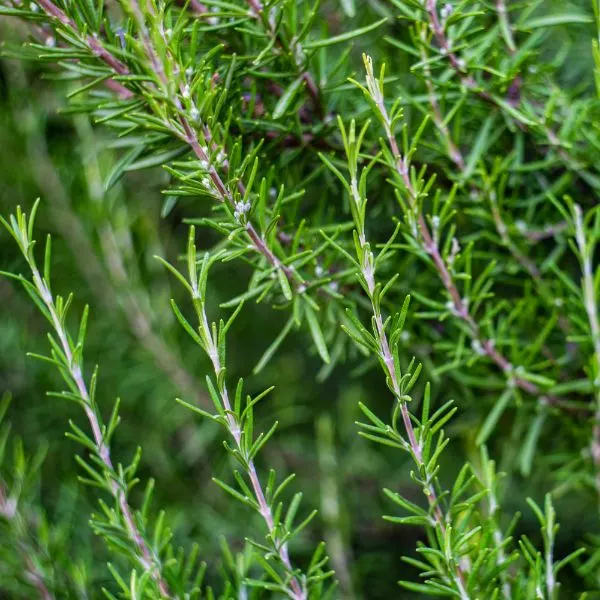
Not many herbs grow comfortably beside rosemary but sage is one of the few that do. Their relationship is a symbiotic one with both serving as insect repellents for each other and rosemary enhancing the flavor of sage.
Both rosemary and sage have pungent odors that deter pests from coming near and attacking them. When grown side by side, the odor is made stronger and is therefore more effective in keeping several pests away.
Not only these two plants benefit from their companionship because other crops in the same area of the garden will likely have their scents masked. This way, pests that they are easily attacked by would be more likely to stay away.
This improves the health of both your rosemary and sage, and that of other crops in your garden. Rosemary is believed to improve the taste and flavor of sage plants as well. Rosemary is a very good companion plant for sage.
14. Strawberries
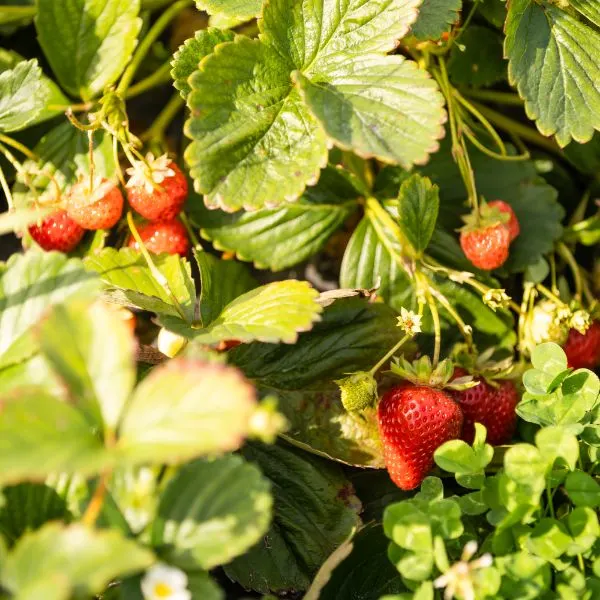
Planting strawberries in close proximity to sage has no adverse effects on any of the pair. While strawberries stand to gain more than sage from this relationship, they both benefit from it and do not cause harm to each other.
The growth of strawberries is affected, slowed and stunted by slugs mostly and some other pests like aphids, thrips, sap beetles and mites. Many of these pests are warded off by the strong scent of sage when present beside strawberries.
When attacks from pests reduce, your strawberry plant is allowed to grow healthy and produce fruits of high quality. Sage also improves the taste of strawberries and strawberry plants enhance the flavor of sage in turn.
15. Thyme

Thyme is a herb with similar origins to sage. It is an aromatic perennial herbaceous plant in the mint family Lamiaceae. This is yet another herb that serves as a good, unproblematic companion for sage in the garden.
Because sage and thyme need around the same quality and amounts of sunlight, water and nutrition, taking care of them together is not a hassle. Both of them like well drained soil and low levels of moisture.
Similar to sage, thyme has a strong and sharp scent that is able to keep certain insect pests away from itself, your sage and other plants around. Thyme also provides sage with more benefits.
Its flowers attract a variety of beneficial insects, including those that help with pollination and those that prey on harmful insects. Lacewings are especially attracted to thyme and their larvae prey on whiteflies and aphids, pests of sage.
Also, thyme is a creeping herb with shallow but easily spreading roots. It can cover up excess garden space and help prevent erosion. This way, weeds are unable to grow in your garden, the space is maximized and yield is high.
16. Tomatoes
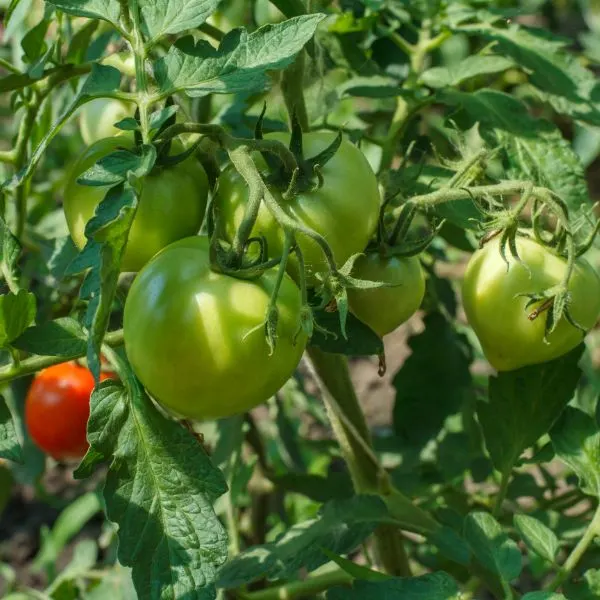
Tomatoes are positively affected by sage as a companion plant. They do not provide sage much benefits but they do not harm the plant either. This relationship is in this way safe for both parties and more ideal for the tomatoes.
Sage is able to repel certain insects that plague tomatoes, like tomato hornworms and spider mites. It also attracts beneficial insects like pollinators to your tomato plant. By reducing damage, sage helps increase the yield of tomato.
Both plants have very different moisture needs and this may seem to pose a threat to their cordiality. However, because they have deep roots, tomato plants are able to find water in the soil and do not have to drown your sage when thirsty.
17. Yarrow
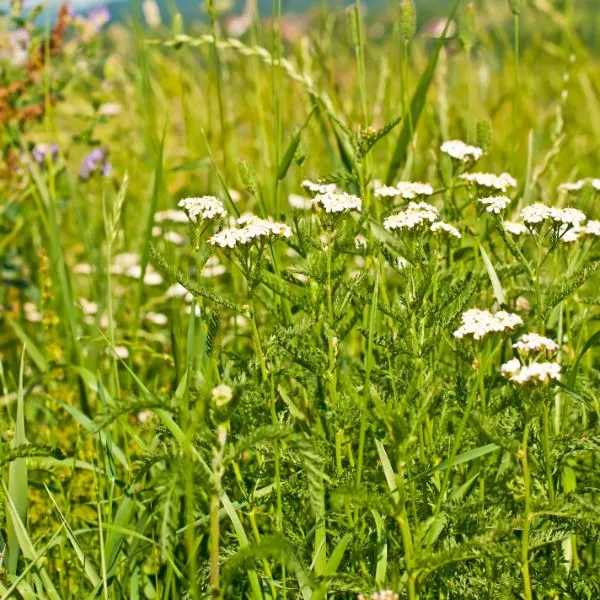
Another good companion for sage is yarrow. Also called old man’s pepper, sanguinary, devil’s nettle, soldier’s woundwort or common yarrow, this flowering herbaceous plant has a sweet scent and flowers in white, yellow, pink or red colors.
Yarrow also likes low moisture levels like sage so both plants can grow favorably. It has a strong odor that several pests do not like. Some of such pests that it keeps away are fleas, mosquitoes and ticks.
This plant attracts beneficial insects to your sage and other plants around it. Pollinators like honey bees are drawn to it. Hoverflies, lacewings and ladybugs that way other harmful insect pests are also attracted to yarrow.
Growing yarrow with sage in the garden is a good idea. This is because yarrow can grow comfortably with sage, help keep several pests away and draw many beneficial insects to your garden. It helps improve the health and yield of sage plants.
Bad Companion Plants for Sage
1. Basil

Sage does not grow well with basil. Basil is a herbaceous flowering plant in the same family as sage: the mint family. It is native to tropical regions of Asia and Africa and it is mostly used for culinary purposes.
Less commonly called great basil, this is one herb that should not be planted with sage. Basil is a great companion to some other plants as it has insect repellent abilities. It deters many pests and mosquitoes from the plants around it.
Be that as it may, basil should not be planted beside sage. This is because they can inhibit each other’s growth, leading to damage for each other. Basil generally prefers the presence of vegetables around it, not other herbs.
While sage needs low amounts of moisture, basil likes lots of water. If these herbs are grown together, your sage may be waterlogged while basil is comfortable, or your basil dry and experiencing drought while your sage thrives.
2. Chives
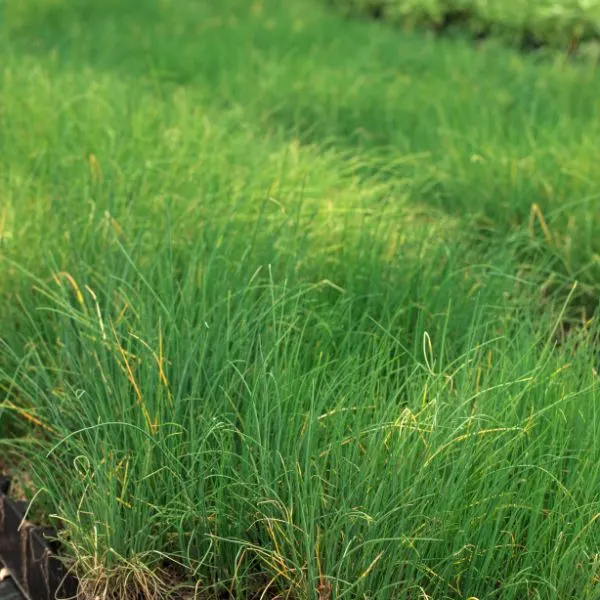
Chives are not good companion plants for sage. They are alliums and alliums in general do not grow well when planted in close proximity to sage. Other related alliums are garlic, onions, salts and scallions.
A chive is a flowering plant that produces edible leaves and flowers. It is used as a seasoning in food, with its flavors of onion and garlic. Alliums like chives need lots of water for optimal growth.
Because sage does not need too much water for its sustenance, a chive plant growing beside it is not the most comfortable or ideal arrangement. Both sage and chive plants cannot thrive in the same conditions.
3. Cucumbers

Another bad companion plant for sage is cucumber. This is a creeping vine plant considered an annual crop. It produces cylindrical green fruits used in cooking as vegetables, usually eaten raw or pickled.
Besides oregano, most herbs are not to be grown beside cucumbers. This is because sage and these other herbs can stunt the growth of cucumbers. Sage is beneficial to many other crops but it causes harm to cucumbers.
Sage can ruin the flavor of cucumber and attract various pests to the plant. Cucumber plants need to be grown with helpful plants that ward off pests they are susceptible to. Such pests include beetles and squash bugs.
In addition to the fact that sage can ruin the taste and attract pests of cucumber, cucumber plants need a lot more water than sage plants do. This difference in requirements makes companionship hard and undesirable.
4. Fennel

Fennel is a species of flowering plants in the carrot family. This hardy, perennial herb has yellow flowers and feathery leaves. Although it is native to the Mediterranean region, it is grown in many other parts of the world.
Another bad companion plant for sage is fennel. It is not the friendliest species, especially to garden plants like sage. This plant contains allelochemicals, which are biochemicals that influence development processes of other organisms.
These allelochemicals can influence germination, growth, survival and reproduction of other crops around your fennel. Although they can have positive effects on some other plants, they have negative effects on your sage.
This means that fennel can inhibit and stunt the growth of sage. It can make this plant unhealthier and limit its overall growth. To this effect, it is advisable to keep fennel and sage far away from each other when growing both in your garden.
5. Garlic
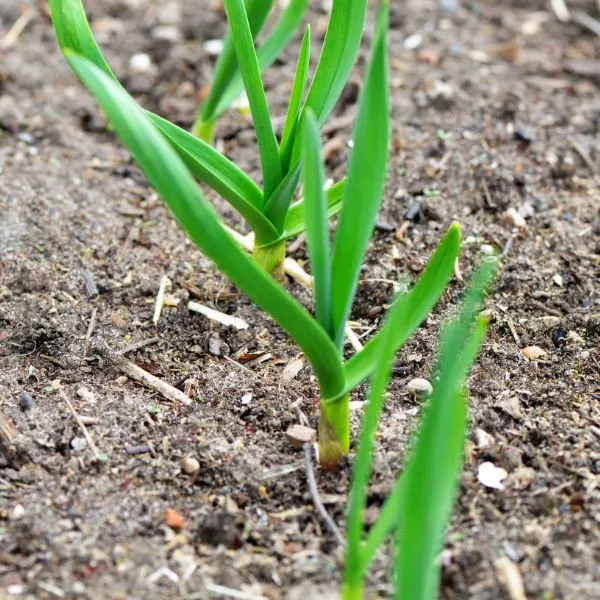
As noted earlier, alliums are bad companion plants for sage. Garlic belongs to this genus. It is a bulbous plant grown in cloves, used as a seasoning or in herbal medicine and related to chives, onions and shallots.
The major reason why this pairing is unfavorable is that sage and garlic need different amounts of moisture. Sage is cordial with plants that need low moisture like itself but garlic, like other alliums, loves water.
If garlic and sage are grown side by side, one would thrive while the other suffers. The garlic may be comfortable but the sage waterlogged, or while the sage is comfortable, your garlic plant may be suffering from a drought.
6. Mint
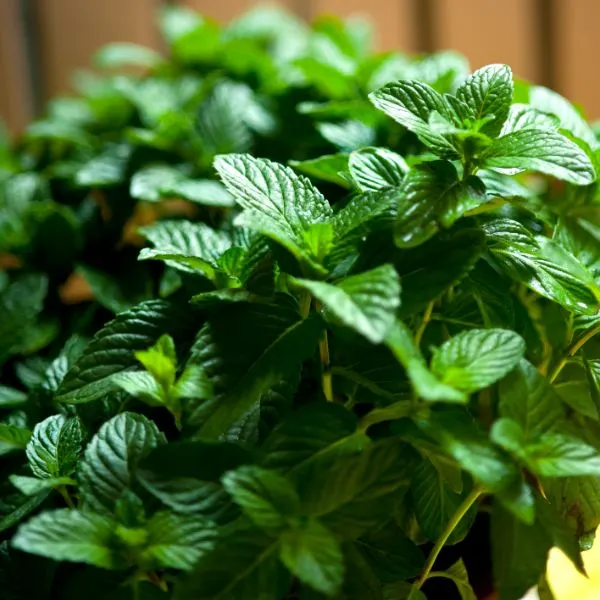
Although a relative of sage, mint should not be raised in close proximity to sage plants. Mint is a genus of flowering plants in the family Lamiaceae, the family sage also belongs to. These herbaceous plants are used in herbal medicine or in cooking.
Mint and sage should not be planted together in the garden bed. Mint grows and spreads fast, competing with sage for nutrients. It is likely to smother and deter the growth of your sage plant because of its rapidly growing roots.
It has been established that sage does not like high levels of moisture in the soil. On the other hand, mint requires a lot of water to grow well. Soggy soil is harmful to your sage while dry soil is detrimental to your mint plants.
Mint and sage are actually beneficial to each other when they are not planted in the same soil. For the advantages that this companionship can bring, plant mint in a different container and then place this beside the sage in your garden.
Some benefits of placing (not planting) sage and mint side by side include pest control, aiding of pollination, attraction of beneficial insects, maximization of garden space and increase of healthy plant yields.
7. Onions
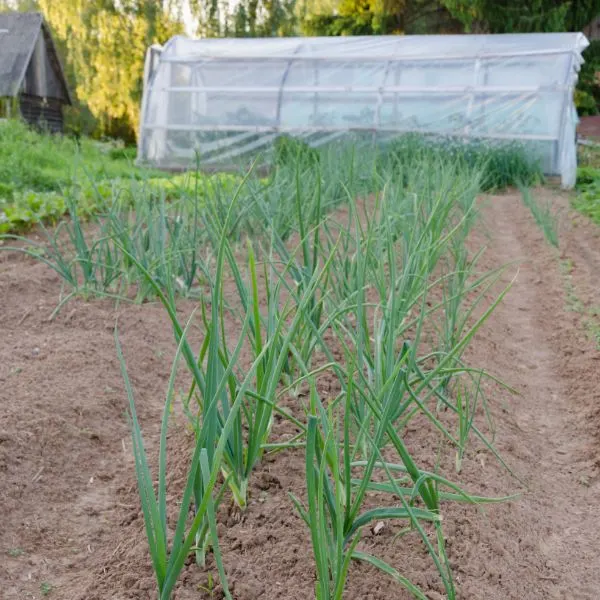
Sage does not fare well beside onions. The onion is an allium and alliums need the soil to have high moisture content. Growing these two plants beside each other creates an imbalance in the nutrient requirements met.
Depending on how much you water that area of your garden, one of the plants will have a hard time growing healthily and producing high yields. Avoid such an uncomfortable situation by keeping onion and sage plants very far apart.
8. Rue

Rue is another bad companion plant for sage. This genus of about ten species consists of evergreen plants with distinct and very sharp odors. They have their roots in the Mediterranean region.
It is highly recommended to not plant rue beside your sage. Although the strong scent of rue is able to repel whiteflies (which are common pests of sage), rue does sage a lot more harm than good.
Rue can impair and limit the growth capacity of sage. It is advisable to keep these herbs far apart in the garden. Aside from being unfriendly to your sage, rue and its essential oils sometimes even cause allergic reactions in humans.
9. Shallots
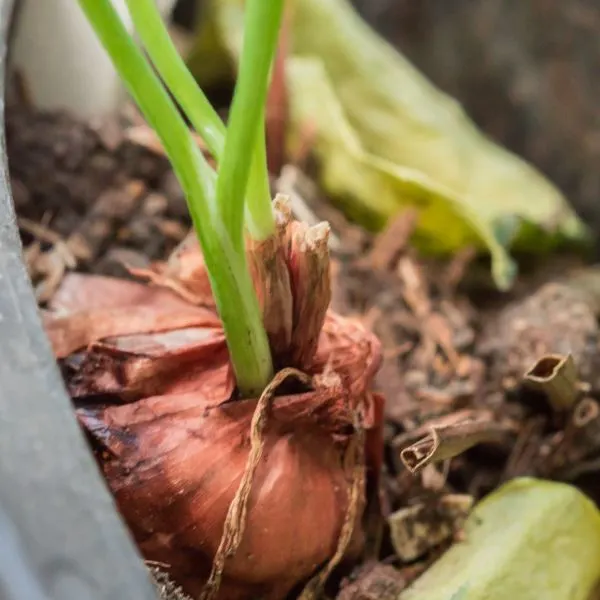
When planning the arrangement of your garden, shallots and sage should not be cultivated together. This is a problematic pairing because shallots are alliums and generally, alliums demand much more water than sage plants for good yields.
An imbalance is bound to occur if shallot and sage are grown together. The shallot may be underwatered or the sage too moist, soggy and overwatered. Because these plants have varying needs, they cannot flourish together and you will likely harm your sage.
10. Wormwoods
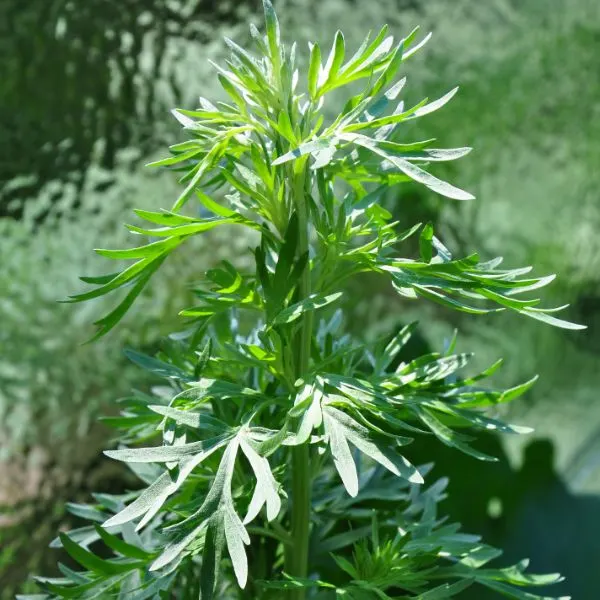
Also called common wormwood, grand wormwood, mugwort or absinthe, wormwood is a species of flowering plants in the daisy family Asteraceae. This species is native to the tropics of Europe, Asia and North Africa.
Wormwoods are usually cultivated as ornamental plants or for use in the making of absinthe and several other alcoholic beverages. Raising them alongside your sage or most edible vegetables and herbs is not a good idea.
Your sage plant can be harmed by wormwoods. Wormwoods have a water soluble chemical substance in their leaves. The said chemical, thujone, is toxic both to other plants and human beings.
Thujone can be washed off from the leaves and into soil in the event of heavy rains. The chemical inhibits the growth of sage and several other garden plants. Ideally, wormwood should not be grown in your garden at all.
Wormwood’s harsh natural taste and strong, sharp odor keep insects (like whiteflies which sage is susceptible to) away from it and its companions. Despite this, do not plant the two together to avoid the death of your sage.
FAQs
What grows well with sage?
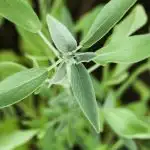
Plants that grow well with sage include beans, brassicas (such as broccoli, Brussels sprouts, cabbage, cauliflower, kale and kohlrabi), carrots, lavender, nasturtium, oregano, parsley, rosemary, strawberries, thyme, tomatoes and yarrow.
What should you not plant sage next to?
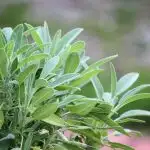
Some plants that you should not plant sage with are: alliums (like chives, garlic, onions and shallots), basil, cucumbers, fennel, mint, rue and wormwoods.
What herb grows well next to sage?
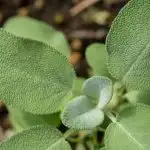
Some herbs that grow well next to sage include lavender, nasturtium, oregano, parsley, rosemary, thyme and yarrow.
Can lavender and sage be planted together?
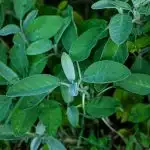
Yes, lavender and sage can be planted together. Lavender is able to attract beneficial insects to your garden, like pollinators or predatory insects. It does not necessarily bring benefits to your sage plant but growing them together is very conducive. Lavender and sage have similar care and nutrient requirements so they would grow well side by side.
Can I plant rosemary next to sage?

It is advisable to plant rosemary next to sage. Rosemary is one of the best companion plants for sage. The relationship between them is beneficial to both plants and other crops in the garden.
Their combined pungent odor keeps harmful insects away from your garden and results in improved yield. Also, the flavors of both sage and rosemary have been observed to be improved after planting them near each other.
Can you plant sage with peppers?

Yes, both sage and peppers are herbs and can be grown in similar growing conditions.
What herbs can you plant with sage?
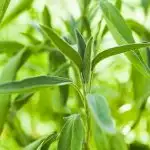
Sage is a versatile herb that can be planted with a variety of herbs including: rosemayr, thyme, lavendar, oregano, chives, and marjoram.
Can you plant sage and basil together?

Basil should not be planted beside sage. This is because they can inhibit each other’s growth, leading to damage for each other. Basil generally prefers the presence of vegetables around it, not other herbs.
Conclusion
Explained above are seventeen (17) good and ten (10) bad companion plants for sage. Sage is a herbaceous flowering plant that belongs to the mint family Lamiaceae. It has distinct grayish green leaves and a strong odor.
This herb is quite easy to grow. It needs full exposure to the sun for about six hours daily. It appreciates direct or indirect sunlight and fertile, well drained but moist soil with a pH of between 6.5 and 7.0.
Sage is tolerant of drought and requires low amounts of water to develop properly. If you are worried about watering the plant too much, it is advisable to water it less because sage may drown because of overwatering and waterlogging.
Nutrients that sage contains include protein, carbs, calcium, fats, iron, manganese, zinc, copper and vitamins A, B6, C, E and K. Intake of the extract from the leaves of this plant may reduce blood sugar levels and protect against some cancers.
It may also improve gut health, support the health of bones, help alleviate diarrhea and combat symptoms of aging. Sage is easy to incorporate into one’s diet, with its aromatic leaves that may be eaten raw or cooked, fresh or dried.
Companion planting can provide several benefits for the crops in your garden, as explained in the examples above. The main aim of this practice is to maximize garden space and increase yield in your garden through relationships.
To achieve this, crops that repel pests, attract beneficial insects, improve soil properties, encourage better taste, provide shade, serve as ground cover and do not compete with each other for nutrients are grown together.
More cool plant stuff
